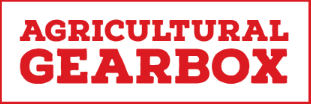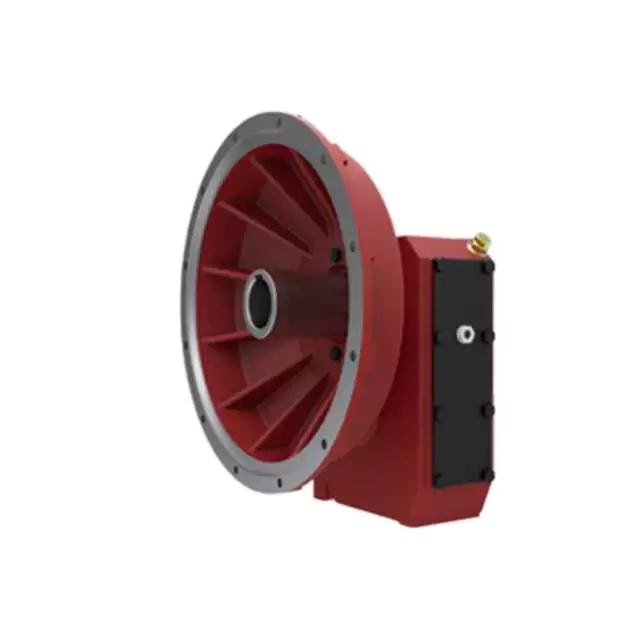Product Description
Flange Input Right Angle Big Output Torque Planetary Gearbox With Motor
Description:
N series of planetary reducers from SGR are widely used for industrial and heavy duty severe applications . planetary reducer feature with compact size, low noise , excellent reliability ,long life . In-line or right-angle planetary gearboxes are available in male and female shaft configurations. The CHINAMFG male shaft solution (splined or cylindrical) is able to withstand strong radial or axial loads on the output shaft. As a leading planetary gearbox manufactory in China , SGR planetary reducer is produced by modular design, combined according to customer requirement, housing material from CHINAMFG with nodular cast iron which can increases gearbox’s rigidity and antiknock, heavy-duty bearing is installed at low-speed shaft, it can bear big radial load due to proportionate distribution of torque ,every CHINAMFG gears are case hardened to get high reliability and long life . SGR planetary reducer have 16 models for different torque range ,each CHINAMFG model have 1-5 stages to achieve different ratios , SGR planetary reducer have wide rang selection of high speed design: cylindrical with key, hydraulic motor, electric motor .Installation in CHINAMFG is multiposition ,various fasten type .
Key feature:
- Planetary gearbox is produced by modular design, and can be combined according to client’s request
- Involuted planetary gear design
- Nodular cast iron Housing to increase rigidity and antiknock
- Heavy duty bearing on low‐speed shaft, and can bear big radial load due to proportionate distribution of torque
- All gears are case hardened to get high surface hardness, which guarantee transmission efficiency and whole gearbox’s life
- Planetary gearbox has 16 models for different torque range, and each model have 1‐5 reduction stages to achieve different ratios
- Ratio range: 3.15‐9N. M
- Output speed: 0.425‐445 r/min
- Structure mode: Possibility of flange, foot, or shaft mounting solutions
- Wide and comprehensive range of N series for industrial applications
- Low speed shaft design: Cylindrical with key, splined, hollow with shrink disc or splined hollow shaft
- Rigid and precise nodular cast iron casing
- Low noise running, high manufacturing quality standard
- High and reliable performance, load capacity and low speed shaft bearing
N series planetary gearbox torque sheet with models
| Gear unit size | 200 | 201 | 240 | 241 | 280 | 281 | 353/354 | 355 | 400 | 401 |
| Normal output torque T2N[Nm] |
1500 | 2000 | 3500 | 4000 | 4300 | 7300 | 13000 | 16000 | 20000 | 23000 |
| Gear unit size | 428 | 429 | 445 | 446 | 510 | 542 | 543 | 695 | 810 | 885 |
| Normal output torque T2N[Nm] |
26000 | 30000 | 32000 | 43000 | 63000 | 75000 | 100000 | 150000 | 300000 | 420000 |
/* January 22, 2571 19:08:37 */!function(){function s(e,r){var a,o={};try{e&&e.split(“,”).forEach(function(e,t){e&&(a=e.match(/(.*?):(.*)$/))&&1
| Application: | Motor, Machinery, Marine, Agricultural Machinery, Industry |
|---|---|
| Function: | Distribution Power, Change Drive Torque, Change Drive Direction, Speed Changing, Speed Reduction, Speed Increase |
| Layout: | Coaxial |
| Hardness: | Hardened |
| Installation: | Horizontal Type |
| Step: | Four-Step |
| Samples: |
US$ 500/Piece
1 Piece(Min.Order) | |
|---|
| Customization: |
Available
| Customized Request |
|---|
Using Agricultural Gearboxes in Specialized Tasks: Tilling and Planting
Agricultural gearboxes are versatile components that play a crucial role in various farming operations, including specialized tasks such as tilling and planting. Here’s how agricultural gearboxes are utilized in these tasks:
- Tilling: Tilling is an essential step in preparing the soil for planting. Agricultural gearboxes are used in tractor-mounted tillers to drive the rotating tines that break up and turn over the soil. The gearbox’s high torque capabilities and power transmission efficiency allow the tiller to work effectively even in tough soil conditions. Adjustable gear ratios in the gearbox enable operators to control the tiller’s speed and penetration depth, optimizing soil preparation.
- Planting: Precision planting requires accurate seed placement and spacing to maximize crop yield. Agricultural gearboxes are integrated into planting equipment to drive mechanisms that distribute seeds evenly at the desired depth. The gearbox’s ability to transmit power with precision ensures consistent seed placement, contributing to uniform germination and plant growth. Some gearboxes in planting equipment also offer variable speed options, allowing farmers to adjust planting rates based on seed types and field conditions.
By enabling efficient power transmission and offering customizable speed and torque settings, agricultural gearboxes enhance the effectiveness of specialized tasks like tilling and planting. Farmers can rely on these gearboxes to achieve optimal soil preparation and planting accuracy, ultimately contributing to higher crop yields.
Factors to Consider When Selecting the Right Gearbox for Farm Machinery
Choosing the appropriate gearbox for farm machinery is crucial to ensure optimal performance and efficiency. Here are the key factors to consider when selecting the right gearbox:
- Power and Torque Requirements: Assess the power and torque needed for the specific task the machinery will perform. Select a gearbox that can handle the required load without straining the components.
- Speed Variation: Determine if the machinery requires variable speed control for different tasks. Some gearboxes offer adjustable speed options to match varying conditions and applications.
- Task Compatibility: Ensure that the chosen gearbox is compatible with the implements and attachments the machinery will use. Different tasks may require different gear ratios and torque capabilities.
- Efficiency: Opt for gearboxes known for their efficiency in power transmission. Efficient gearboxes minimize energy losses and maximize the output of the machinery.
- Durability: Farming environments can be demanding, so select a gearbox that is built to withstand the conditions, such as exposure to dirt, moisture, and impacts.
- Size and Weight: Consider the available space and weight limits on the machinery. Choose a gearbox that fits within these constraints without compromising performance.
- Maintenance: Evaluate the maintenance requirements of the gearbox. Gearboxes that are easy to maintain and service can minimize downtime and keep the machinery running smoothly.
- Cost: Balance the initial cost of the gearbox with its long-term benefits and performance. Investing in a quality gearbox can lead to better overall cost-effectiveness over time.
- Compatibility: Ensure that the gearbox is compatible with the power source (such as the tractor’s power take-off) and other components of the machinery.
- Manufacturer Reputation: Choose gearboxes from reputable manufacturers with a history of producing reliable and high-quality agricultural machinery components.
By carefully considering these factors, farmers can select the right gearbox that meets the specific needs of their farm machinery, leading to enhanced efficiency, productivity, and longevity of equipment.
Maintenance Requirements for Agricultural Gearboxes
Maintaining agricultural gearboxes is crucial to ensure the smooth and efficient operation of farming equipment. Proper maintenance helps extend the lifespan of gearboxes and prevents costly breakdowns. Here are the key maintenance requirements:
- Regular Inspections: Conduct routine visual inspections to check for signs of wear, damage, leaks, or misalignment. Regularly inspect gear teeth, seals, and bearings for any issues.
- Lubrication: Proper lubrication is essential to minimize friction and wear in gearboxes. Follow the manufacturer’s guidelines for the type of lubricant to use and the recommended intervals for lubrication.
- Lubricant Checks: Monitor the gearbox’s lubricant levels and quality regularly. Replace or replenish lubricants as needed, and ensure that contaminants are kept out of the lubrication system.
- Tightening Bolts and Fasteners: Check and tighten bolts, nuts, and fasteners to prevent loosening due to vibrations during operation. Loose components can lead to misalignment and premature wear.
- Seal Inspection: Examine seals for leaks and proper sealing. Damaged or worn seals should be replaced promptly to prevent lubricant leakage and the ingress of contaminants.
- Cleaning: Keep gearboxes clean by removing dirt, debris, and residue. Regular cleaning prevents abrasive particles from entering the gearbox and causing damage.
- Alignment: Ensure that gearboxes are properly aligned with connected components, such as shafts and couplings. Misalignment can lead to increased wear and reduced efficiency.
- Temperature Monitoring: Monitor the operating temperature of the gearbox. Abnormal temperature increases may indicate issues like overloading or insufficient lubrication.
- Filter Replacement: If the gearbox has a filtration system, regularly replace or clean the filters to prevent contaminants from entering the gearbox.
- Expert Inspection: Periodically have gearboxes inspected by qualified technicians. They can identify potential problems that may not be visible during routine inspections.
Adhering to these maintenance requirements ensures that agricultural gearboxes remain in optimal condition and contribute to the reliability and efficiency of farming equipment. Regular maintenance not only prevents unexpected downtime but also prolongs the service life of the gearboxes, ultimately benefiting the productivity of agricultural operations.
editor by CX 2024-04-02





